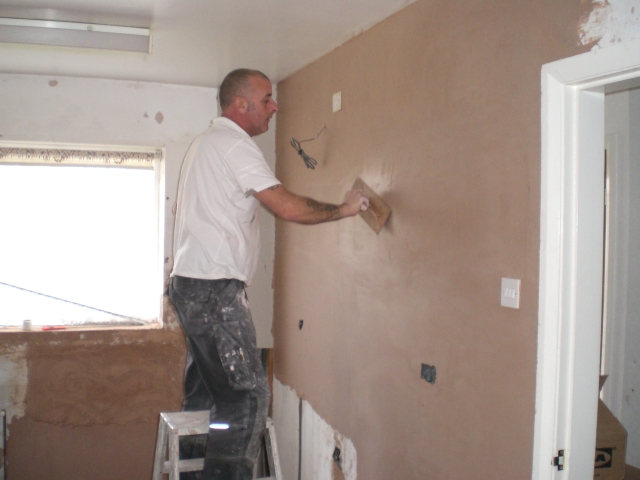If you’ve recently had your walls or ceilings plastered, you might be wondering: how long does plaster take to dry, and when can I paint over it? This is one of the most commonly asked questions we hear – and for good reason. Rushing to paint plaster before it’s fully dry can cause real problems, including flaking paint, uneven finishes, and even trapped moisture that leads to mould.
In this post, we’ll explain how long plaster takes to dry, what affects the drying time, and how to know when it’s ready for decorating.
How Long Does It Take for Plaster to Dry?
On average, freshly plastered walls take 4 to 7 days to dry, but this can vary depending on several factors:
-
Type of plaster – A standard skim coat dries quicker than a full two-coat plastering job.
-
Thickness of the plaster – Thicker applications take longer to dry.
-
Room temperature – Cold or damp rooms slow down drying. Warm, well-ventilated rooms help speed it up.
-
Humidity levels – High humidity (especially in kitchens or bathrooms) can delay drying time.
-
Airflow – Good airflow helps plaster dry more evenly. Open windows and doors where possible.
As a general rule, it’s better to wait a bit longer than rush into painting. If you’re unsure, always ask your plasterer for guidance.
What Does Dry Plaster Look Like?
A good way to tell if your plaster is ready for paint is by looking at its colour.
-
Wet plaster is dark brown or pinkish in colour.
-
Dry plaster will become much lighter, almost pale pink or even off-white depending on the mix.
Don’t rely just on touch – the surface might feel dry but could still be damp underneath, especially if applied thickly.
If in doubt, wait an extra day or two. Patience here pays off.
Can I Use a Dehumidifier or Heater to Speed Things Up?
It’s tempting to bring in a heater or dehumidifier to make the plaster dry quicker, especially in colder months. But be cautious.
-
Too much heat can cause the plaster to dry too quickly, leading to cracks.
-
Dehumidifiers can be helpful, but only after the first 24–48 hours. Using them too early may cause shrinkage or prevent proper curing.
The best approach is natural ventilation – keep windows open during the day and allow the room to dry at its own pace.
When Can I Paint Plaster – and What Should I Use First?
Once your plaster is completely dry, you’re ready to decorate – but don’t reach for the regular emulsion just yet!
You need to apply a mist coat first. This is a diluted emulsion (usually about 70% paint, 30% water), which soaks into the plaster and provides a good base for further coats. Applying undiluted paint directly to fresh plaster can cause peeling and patchiness.
Steps for painting new plaster:
-
Make sure it’s fully dry.
-
Apply one mist coat using a roller or brush.
-
Let it dry fully.
-
Apply two full coats of your chosen emulsion paint.
Top tip: Avoid using vinyl or silk paints at this stage – they don’t let the wall breathe and could trap moisture.
Summary
Plastering is a crucial part of getting your walls looking their best, but knowing when to paint is just as important. Here’s a quick recap:
-
Drying time: 4–7 days, sometimes longer.
-
Look for: Light, even colour as a sign of dryness.
-
Avoid: Painting too early, using too much heat, or skipping the mist coat.
-
Do: Use good ventilation, be patient, and follow the correct steps to decorate.
If you’re in doubt about whether your plaster is ready to paint, or you need professional advice, don’t hesitate to get in touch

